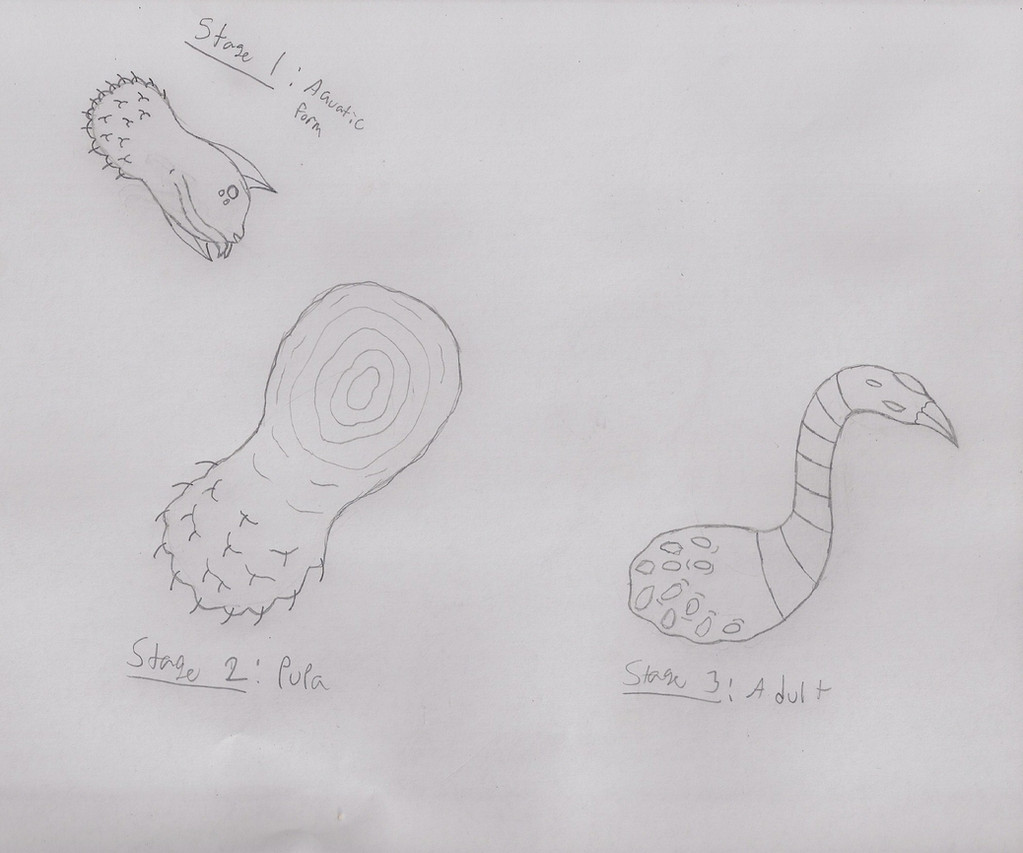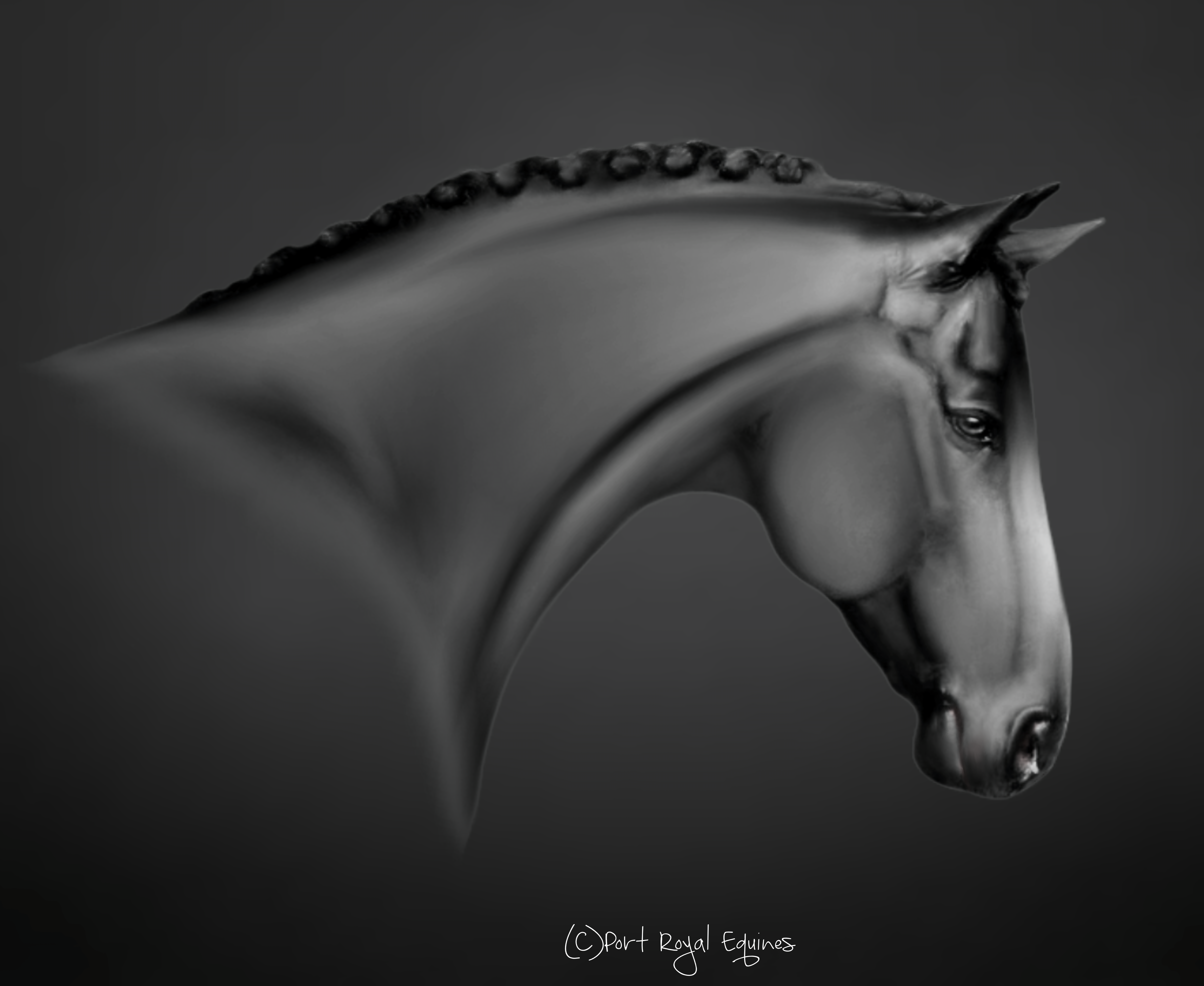HOME | DD
 Springfallendeer — Parasite 1 (Unnamed)
Springfallendeer — Parasite 1 (Unnamed)

#creature #drawing #parasite #stages #unnamed
Published: 2014-12-04 11:32:59 +0000 UTC; Views: 1931; Favourites: 4; Downloads: 0
Redirect to original
Description
Another bit of artwork forThis time, its a parasite.
I've done all 3 active stages (So need to do the egg stage) and have some basic info on them
Stage one: Aquatic/Larva stage
Appearance:
At max size, this creature is about as big as the typical honey bee. Starts out about the size of a grain of sand. Along its hindquarters are dozens of tiny barbs- used with the intention of latching on to the nasal cavity of the host. From its sides protrude two hook like appendages. These appendages are used to grasp aquatic foliage- and to help it position itself come the invasion of its host. On the top and bottom are two fin like structures used to aid with swimming. This stage also sports a pair of puckered "Lips", and a 3 sets of eyes. It is white in color.
Description:
Prior to reaching the mature phase of this stage, the parasite feeds much like a plant- it absorbs sunlight to produce energy. Only a small portion of the collected energy is used to aid in its growth- a majority is stored for later so that it has the required nutrients to get it to its next step. This parasite swims backwards via expelling water from its mouth like a jet- and the fins are used to help it change or keep directions.
Invasion of host:
This parasite enters the nasal cavity of its host when said host drinks the water it contaminates. It will swim into the orifice if it can, and when able it will use the appendages on its sides to latch on to the flesh. From there, it slowly pushes its body inwards, being sure to move backwards. Once in an area that it deems appropriate, it will drag its body back and forth until the barbs on its backside have hooked onto the tissue. As soon as its rooted in place, it beings the next stage of its lifespan.
~~~~~~~~~~~~~~~~~~~~~~~~~~~~~~~~~~~~~~~~~~~~~~~~~~~~~~
Stage two: Pupa
Appearance:
The pupal stage still sports the barbs of the first stage, and are the sole anchor that keeps it from becoming dislodged. It is a grey color in appearance, and swells at the top as the parasite inside becomes ready to emerge.
Description:
Little is needed to be described. Upon hitting the pupal stage, the parasite secretes a wax-like substance from its body which forms a protective shell. At the same time, all un-needed parts such as the eyes and fins, are dissolved and absorbed into the shell to make it somewhat elastic, which allows future expansion of the upper area. From there, the pupa does nothing- and the creature inside focuses on its transformation.
Invasion of host:
Host has already been invaded.
~~~~~~~~~~~~~~~~~~~~~~~~~~~~~~~~~~~~~~~~~~~~~~~~~~~~~~
Stage three: Adult
Appearance:
The final stage of this parasite is worm like in structure. The head of the worm sports two barb like appendages, which it uses to hook into the hosts skin and move around, as well as to siphon nutrient rich blood. Its body is ringed, and deep red in color due to the blood it drinks- though upon emerging from the pupa, it is white. Starting size is just larger than that of a honey bee with a long tail, but come full grown its is just over half an inch long. The back end is considerably larger than the rest of the body, as it houses all internal functions. On its head and backside are a series of mucus producing sacks, which produce 2 different enzymes. One forms a glue, to keep it rooted. The other, an anti-adhesive which dissolves the glue.
Description:
The final stage survives by burrowing its head into the hosts flesh to siphon blood. When doing this it glues both its head and backside in place so that it cannot be disturbed. When the blood supply in its selected area stops or runs slow, it dissolves the glue and removes its head, then waits for its meal to be fully digested. When hungry again, it either tries the same spot again or moves elsewhere. The large rear end swells up to the size of a quarter as it sucks its hosts blood.
This creature does not reproduce until reaching the end of its lifespan. When ready to breed, the male and female mate- and the next time the host gets a drink of water, they jump in. From there, the female lays her eggs in the sand, then dies. The male does the same, shortly after. Then the cycle starts anew.
The eggs are about the size of a grain of sand, and up to 300 are laid.
Invasion of host:
Host already invaded.
Related content
Comments: 8

It reminds to me to the Anime: "Parasyte: Kiseijuu Sei No Kakuritsu" o3o
👍: 0 ⏩: 1

I will explain you. Some kind of aliens, or parasytes are trying to control people's brain, and if they can, they will start to eat other people for survive (Actually, for exterminate the human race)
👍: 0 ⏩: 1

I see~ For a second I thought I was ripping something off XD
This parasite invades the nose of a host, and because of them being there they actually damage the hosts sense of smell- causing total loss of the ability.
👍: 0 ⏩: 1

Nice~ o3o Well, I recomend you the Anime. Is freaking cool and has good action scenes
👍: 0 ⏩: 1


























